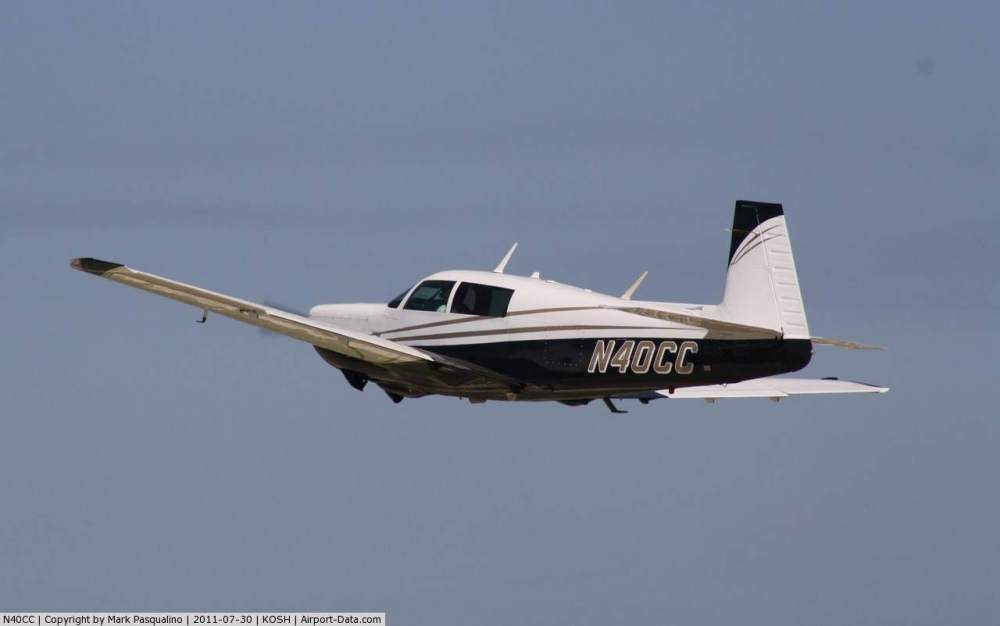-
Posts
190 -
Joined
-
Last visited
-
Days Won
1
peter last won the day on December 30 2012
peter had the most liked content!
Contact Methods
-
Website URL
http://www.linkedin.com/in/aeroinnovator
Profile Information
-
Gender
Male
-
Location
Albuquerque, New Mexico
-
Interests
Aerospace Executive and Entrepreneur. Previuosly co-founded Aspen Avionics and subsequently held various senior leadership roles at the company until my departure in mid 2012
-
Model
M20k 231
peter's Achievements
-
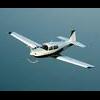
FS: SOLD Nose Dragger electric aircraft tug SOLD
peter replied to peter's topic in Avionics / Parts Classifieds
Sorry, its sold. -
Gently used Nose Dragger electric tug in good condition. Asking $850/obo. This is the older 12V version that originally listed at $1385 new. Used it on my Mooney for the last 10 years, but sold the aircraft earlier this year so need to move it. Located at KAEG airport near Albuquerque, NM. Local pickup or buyer arranges for shipping. PM for more info.
-
Albuquerque based, exceptionally well equipped and meticulously maintained 1982 Mooney M20K 231 with a strong running Zephyr-overhauled mid-time engine, recent paint, and stunning avionics including Aspen 2500 3 Display dual-AHRS EFIS with Synthetic Vision, Angle of Attack, XMWX datalink weather, and PFD/MFD autopilot reversion, complemented with a Garmin 530W and STEC 55 approach certified autopilot with altitude preselect. 2020 compliant with GTX 330ES ADS-B out. The Mooney 231 is an incredibly capable and highly efficient IFR cross country platform that cruises in the mid-teens at 170 KTAS and 10 GPH. 1170 SMOH By Zephyr, 1140 SPOH, 4270 TTAF. More Photos HERE DETAILS: 1982 Mooney M20k 231 N40CC Serial # 25-0646 Ask: $144,500 Airframe: Serial Number: 25-0646 TTAF: 4270 Last Annual: 6/12/2018 Complete Original Logs with Digital Copies available for download No Damage History 75.6 Gallons Useable Fuel 943 lb Useful Load 4 Place Factory Oxygen with 115 cf Composite Tank - new tank in 2014 Interior: Tan custom leather interior in good condition. Exterior: Green and gold over white modern Scheme Designers paint scheme in excellent condition Engines / Mods / Prop: Continental TSIO-360-LB1B 210 HP Turbocharged Six Serial Number: 247252-R Overhauled by Zephyr Aircraft Engine to New Tolerances - 4/27/2005 1170 SMOH Latest Compressions 75, 77, 79, 77, 70, 79 /80. Blackstone Oil Analysis at each oil change for the last 800 hours Merlin Upper Deck Pressure Controller Turbo GAMI Injectors Magnetos overhauled at 1100 SMOH (2017) McCauley 2 blade hot prop Hub Serial Number: 812545 Blade Serial Numbers: BF958, CA373 1280 SPOH (Resealed at 950 SPOH) Avionics / Equipment: Aspen Evolution 2500 3 Tube System with Synthetic Vision AOA XM WX Datalink Weather EBB Extended Capacity Emergency Battery Autopilot PFD/MFD Reversion GPSS GPS Roll Steering ADS-B IN provision is unlocked Extended Warranty thru August 2020 Avidyne TAS 620 Active Traffic Garmin GNS 530W WAAS GPS NAV/COM #1 King KX-155 NAV/COM #2 Garmin GTX 330ES Transponder with ADS-B Out Garmin GMA 340 Audio Panel w marker beacon, music & telephone input STEC 55 Auto Pilot Coupled ILS and GPS LPV Approach Altitude Pre-Select Flight Director Remote Mode Annunciator Control Wheel Steering Electric Pitch Trim Shadin MicroFlo Fuel Computer with GPS input JPI 700 Engine Analyzer Horizon Instruments P1000 Digital Tachometer Factory Hot Prop Precise Flight Pulse Lights Front Articulating Seats Rear Split Removable Seats Prewired for ACK E-04 406MHZ ELT
-
I am sure Garmin would like it that way, but that is simply not the way that certification works. Anyone can seek an approval for an alternate configuration, and Garmin has NO say in the matter. Once a modification is approved (i.e. FAA approved, aka "certified") it is approved, period. Garmin has no authority over this and can't stop anyone from seeking an approval, or from modifying an aircraft per that approval. Approvals can be obtained via STC, Field Approval (aka 337), or via minor alteration. To get an approval you have to show that the mod complies with all regulatory requirements, no different from what Garmin had to do to obtain their own STC in the first place. Just like Mooney, Cessna, Piper, etc. had no say about Garmin getting their STC to modify the original TC'd aircraft configuration, subsequent changes to that certified G500 configuration can be (and obviously, are) approved. Only the FAA can issue or deny an approval. Garmin has nothing to do with it.
-
Ok, since there is no relay the potential for failures in 5 of the wire connections, and in the relay, goes away. But, there are still 12 wire connections to the 4 pole double throw switch that remain, and 4 potential points of internal switch failures. Agreed that the odds of this failing at the same time as the G500 is remote, and agreed that your dual power architecture is very good mitigation against total power failures, and agreed that having the backup able to connect to either GPS in the event of a G500 failure is a good redundancy choice. My point, which I guess I didn't make very well, is that these redundancy choices can have an impact on reliability, especially down the road as the wiring ages and the solder joints have gone through countless thermal cycles. Significant ? Probably not. Measurable? Probably so. Look at your electrical system as an example. I'm guessing you go through twice as many alternator failures and battery replacements as I do on my 231. You are also twice as likely to not experience a full electrical generation or power failure in flight as I am. Redundancy and reliability tend to have an inverse relationship. No worries though, Garmin will probably "fix" all this wiring and mechanical switch nonsenses with their next gen G700 wireless avionics architecture that seamlessly connects all onboard avionics systems using a proprietary, encrypted 802.11n dual band link, which can be controlled by a multifunction touchpad controller from Apple. Cheers!
-
It's more likely that the switch controls a relay (or two) that provides the switching of the 8 inputs and 4 outputs, so there are 12 discrete points of failure in the wiring (e.g. broken wire, cold solder joint, etc) that would interfere with Don's ability to get nav data on the ESI 500, plus two additional points of failure for relay power and relay control assuming a single relay, plus two more points of failure on the switch, plus one more point of failure on switch ground, plus potential internal failures in the switch or the relay. Understood that the switch allows the backup to be connected to either nav source, so if one fails the other is available to the backup display. The probability of failure of the GPS Nav/Com (very low) would need to be contrasted against the probability of failure of the switch/relay and its wire connections (moderate), to determine if the switched architecture is more/less reliable than a hardwired configuration. My experience is that the hardwired configuration will have a lower failure probability, so would be preferred for a backup application. The more complex the architecture, the more switches and relays, or the more LRUs can all increase the probability of experiencing the failure per flight hour simply because there are more things that can break. In Don's case, unless there is an emergency power source to the GPS Nav/Coms it will all be moot since when he experiences a complete electrical failure (a remote, but non-zero possibility) neither of the two GPS Nav/Coms will have power, so there will be no navigation inputs to the ESI500 and so he will loose CDI nav inputs and SVS on it as well (no GPS/VOR/ILS). At that point he would be flying a basic three in one attitude indicator and likely using his iPad or portable GPS for emergency navigation. That's the worst case, single point failure scenario and so the one that should be practiced for partial panel proficiency.
-
It's allowed because the second Aspen with the battery backup meets all the certification requirements to act as the backup airspeed and altitude display for the first Aspen. However, the attitude display on the second Aspen cannot be used as a backup to the attitude display of the first Aspen because attitude is more critical, and a single point of failure exists (loss of airspeed) that will cause the loss of all attitude on the Aspen displays. The FAA rules are set up in a way that recognizes that attitude display is more critical than airspeed and altitude display, even more so in a glass equipped aircraft. For example, with conventional instruments if you are in IMC and you lose airspeed and altitude, but still have attitude you can still fly the airplane. Likewise, if you have conventional instruments and you lose attitude and heading, but still have airspeed and altitude and a turn coordinator, you can still fly the airplane. However, if you lose attitude, heading and the turn coordinator, then you are likely to lose control. In a glass airplane if you are in IMC and lose airspeed and altitude, but still have attitude, you can still fly the plane. However, if you lose attitude (which comes from an AHRS, so also implies loss of heading and rate of turn) then all you will have left to fly with is airspeed and altitude, and you are again likely to lose control. Because of this, the FAA rules say that there can be no single point failure that causes the loss of all attitude information to the pilot, but loss of airspeed and altitude from a single point failure is allowed (hence the reason why the rules only require one pitot tube, airspeed instrument, and altimeter for light aircraft). Conventional instrument aircraft address these issues with an electric TC and partial panel techniques. Glass equipped aircraft address these issues with backup instruments that use different power sources. Separately, I think you were also asking about what I said about primary and secondary/advisory data display. Hopefully the following clarifies: When the Aspen with EBB is installed and the mechanical altimeter and airspeed indicator are removed, the display of altitude and airspeed on the Aspen is primary. In this configuration the Aspen IAS and ALT tapes are locked on, and cannot be turned off by the pilot. When an Aspen is installed and mechanical altimeter and airspeed indicators are retained, the mechanical indicators are primary and the airspeed and altitude display on the Aspen is secondary/advisory. In this configuration the pilot can select to turn the IAS and ALT tapes on and off. Hopefully this helps thin the mud a little.
-
A second Aspen is not approved to act as an AI backup for the first. This is a limitation of the Aspen STC related to the AHRS in each unit relying on air data info to derive attitude (meaning that if air data is bad then the attitude solution is no good and removed - yes, attitude, as in which way is up). The Aspen AHRS air data dependency is a single point vulnerability in the system architecture, and is why the Aspen STC requires a backup instrument that doesn't rely on air data to figure out attitude. An advisory instrument is one that is not primary. In the case of an Aspen equipped aircraft, the airspeed and altitude shown on the Aspen is primary. Airspeed and altitude shown on another instrument is advisory. Same goes if you install an SAI 340 as replacement for a mechanical AI and retain the mechanical IAS and ALT. Those instruments are primary, the IAS and ALT indications on the SAI340 are advisory. As always with aircraft certification, clear as mud, right?
-
It's happened to me, several times. Closing the door in flight is a two person, two handed operation. The guy in the right seat won't be able to get enough leverage to pull the door shut, so the guy in the left seat will need to do that while the guy in the right seat flies You need to slow down and put the aircraft into a right wing low sideslip. If you don't open the pilot window then the next step won't work. In the sideslip, with the window open, reach across the cockpit with both hands, pull on the door strap with all your might with one hand and push the door handle forward with your other hand and latch the door. It might take a few tries to get both upper and lower latches engaged. Single pilot just fly with the door open. It will take a more power than normal, but otherwise handles fine. Trying to close the door when you are alone is a futile exercise fraught with risk - not recommended! You'll probably need to turn the volume way up on your radio too - it's loud in the cabin when the door is open! Peter 82 M20k 231
-
SN 25-0446 and earlier have 72 gallons useable. 25-0447 and later have 75.6. I realize the following doesn't directly answer your question, but it might be helpful anyway. We drained the fuel and refilled our 82 M20k several years ago - our serial number is above 25-0447. For our aircraft when the fuel is at the bottom of the filler neck we have 34 gallons of useable fuel. From there, fueling slowly and "burping" the wing while fuel rises above the base of the filler neck will allow us to add the remaining 3.8 gallons to get to "full full", which corresponds to fuel starting to spill out onto the wing. When we drained and refilled we found that the wing site gauges were pretty accurate throughout the fill range. The right gauge was correct at all value and left indicator under read the actual fuel by 2-3 gallons for all partial loads below 25 gallons. Above 25 gallons it was correct. Both wing gauges showed empty (no longer moving when sloshing the wing) when there was 5 gallons fuel remaining in the tank. The panel gauges were wrong everywhere bat at E. The tanks are truly empty the instant the needle aligns with the red mark (and not below the mark like in a car). Our low fuel lights came on at 4 gallons left and 5 gallons right. Hope this helps. Peter 82 M20k 231
-

Air travel safer without pilots!
peter replied to wishboneash's topic in Miscellaneous Aviation Talk
I wouldn't be so quick to laugh about this. My pre-teen kids will be learning to drive at the same time that driverless cars hit main street. I womder if they will be the last generation that has to learn how to drive to be able to use a car. For them, pilotless aircraft will make sense. When you consider that we rarely hear about the aviation catastrophe that was avoided thanks to the heroics and skill of the pilots, but often hear of the one that was the result of pilot error, I expect the future will be full of folks who are comfortable flying in a pilotless aircraft and afraid of the ones that depends on the pilot to get to their destination. -
I think Antares has nailed it. You need to make sure you and your partner have the financial capacity to absorb an engine overhaul (or other big expense) at any time since those things can happen at any time. In your partnership agreement make sure you include a buy-sell provision in case some major event happens and your partner can't pony up their share to fix it. Now is the time to get that stuff figured out, not after it happens. As far as "normal" operating costs, for our 231 we charge ourselves $25/hr to cover unscheduled minor maintenance between annual and oil changes. We charge monthly dues that cover all fixed expenses and also build up a $4k annual reserve to cover the annual inspection. We do not collect reserves for engine, prop, turbo, etc. Some years we have to write checks at annual, some years it all balances out, and in rare years we get lucky and have money left over to do upgrades/improvements. Good luck with it! Peter 82 M20k 231
-
It seems a little unusual that "proprietary matters" prevent your Atlanta shop from interfacing to the Aspen equipment. That information is included in and is part of the Aspen STC, which you clearly have rights to since it is already installed in your aircraft .... Take it to Kirk at Sarasota. They know what they are doing, do good work, and are good people that will treat you well. Peter 82 M20k 231
-

Aspen 1000 PFD - Battery Countdown Warning
peter replied to mooneyman's topic in Avionics/Panel Discussion
The countdown is displayed when the unit first switches onto battery while it is figuring out how much battery charge is remaining. It has to let the battery discharge a little to figure out how much charge is left. The real question is why is the Aspen switching to battery - this requires the input voltage to remain below 12.3V for a short period of time. Check your charging system. -
Obviously your original problem remains unresolved. I recommend you follow back up with the shop/Aspen to continue to troubleshoot what they apparently believed to be a setup/adjustment issue.


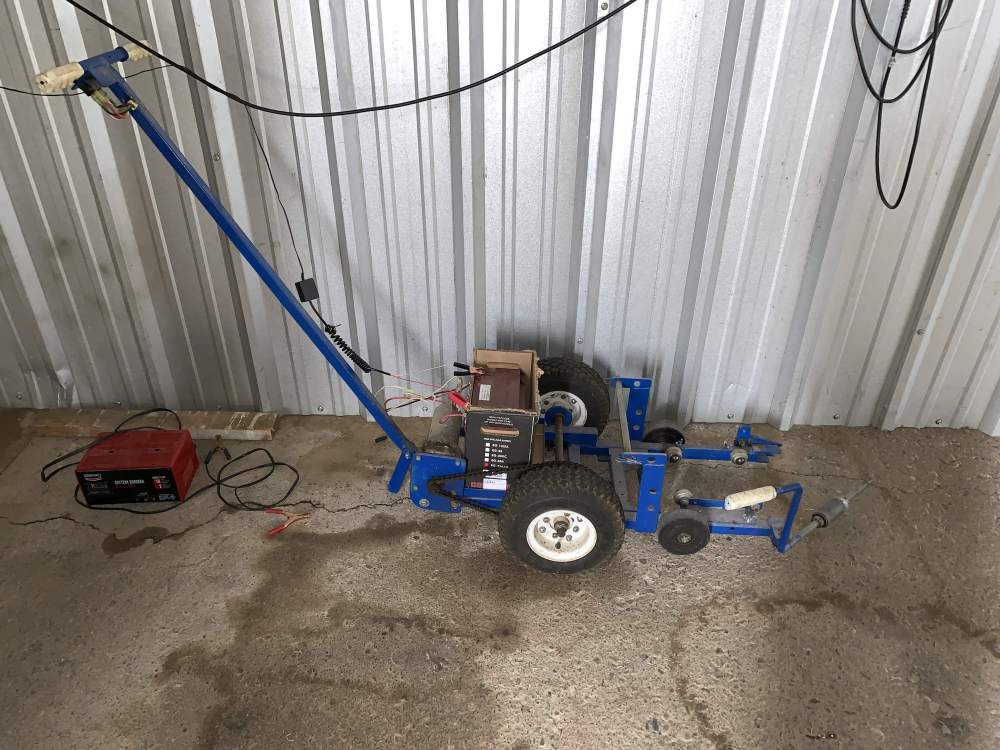
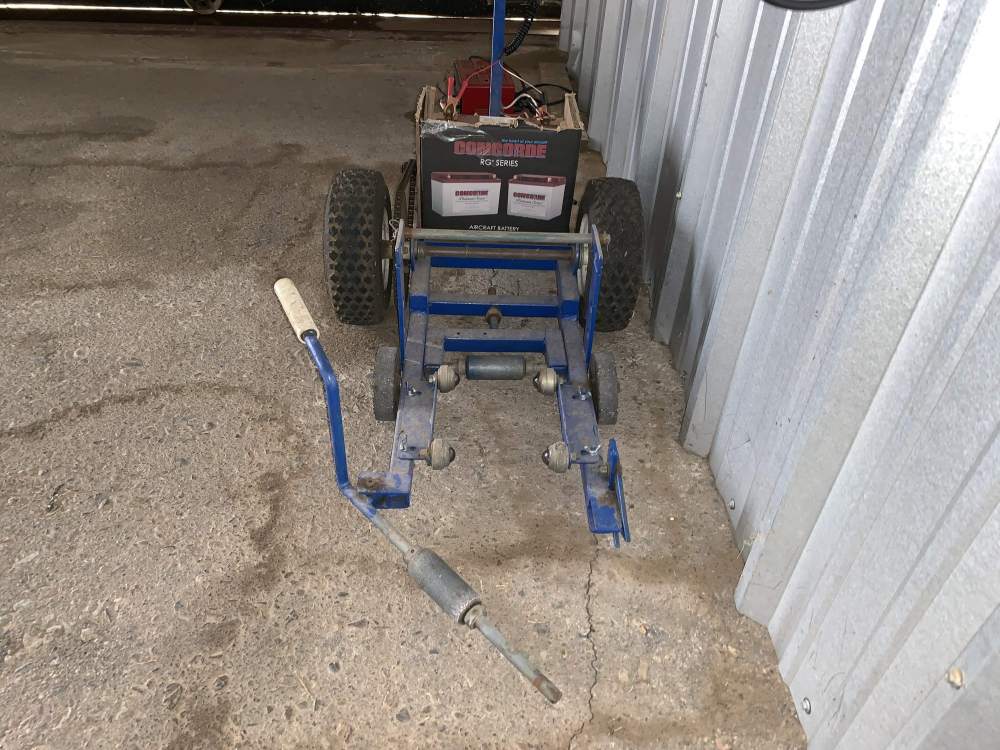
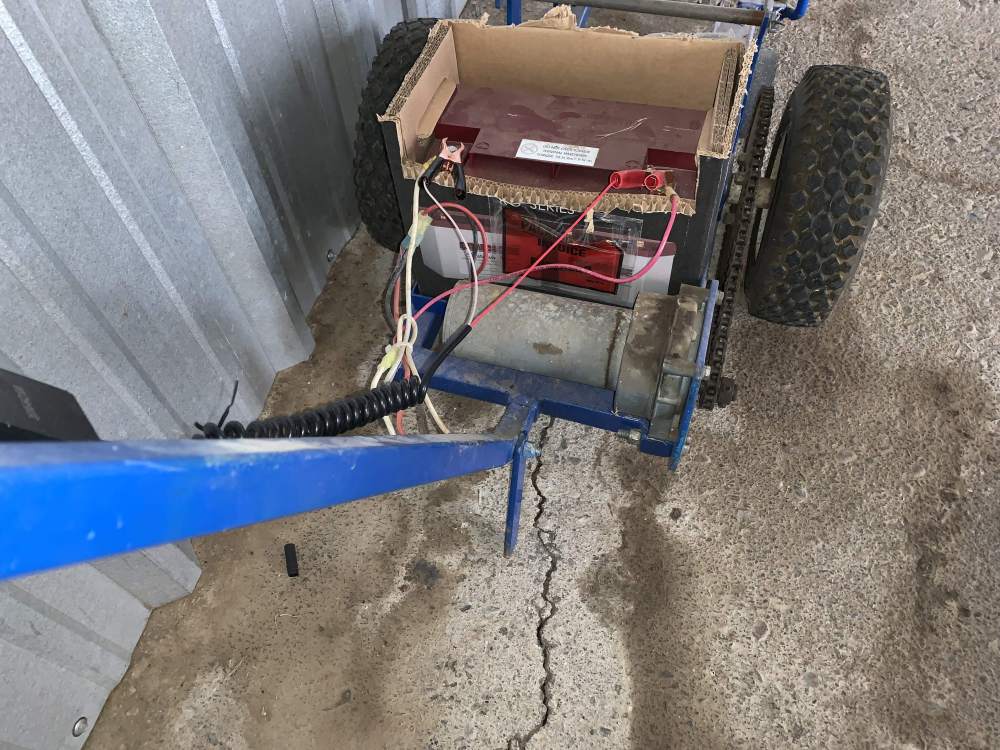
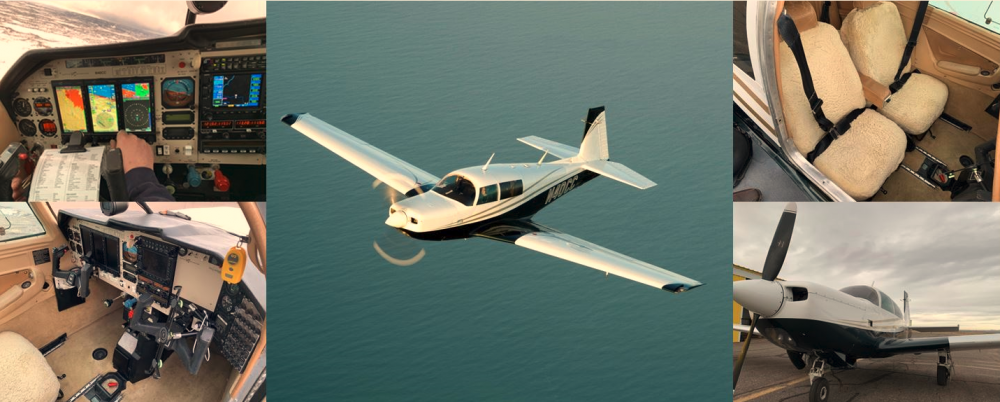
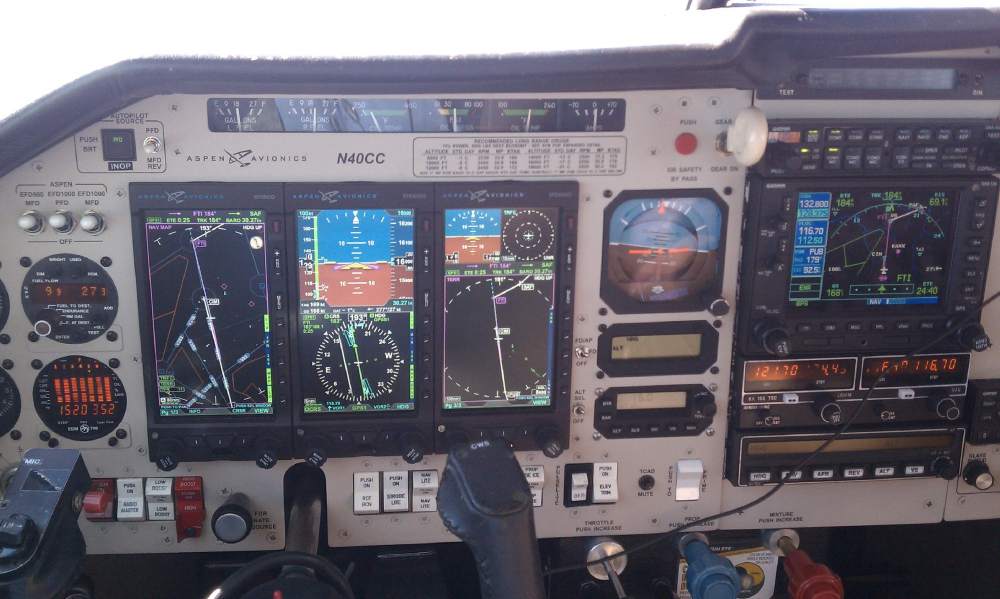
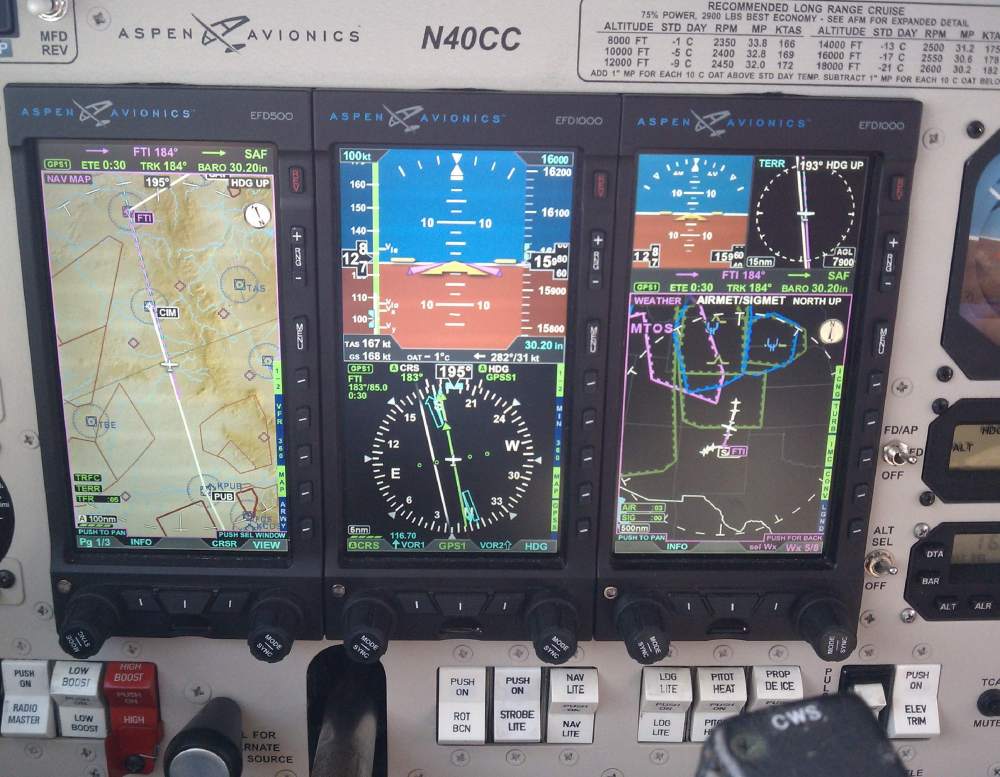
.thumb.jpg.39303082e66f6ee595ecb00746a41048.jpg)
